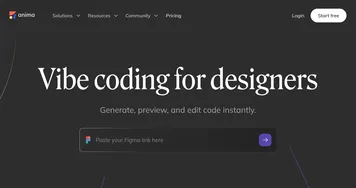Remodeled AI
Last weekend, I decided to give my outdated living room a facelift, virtually at least, and stumbled upon Remodeled AI. I’m no interior design guru — just a guy with a phone and a dream of a less beige existence. So, I snapped a quick photo of my cluttered space, uploaded it to Remodeled AI, and picked “modern farmhouse” from the style menu. In about ten seconds, my screen lit up with a version of my room I barely recognized: clean lines, a rustic coffee table, and walls painted a crisp white that made the space feel twice as big. It was like my living room had gone to design school and graduated with honors.
The AI Remodel Mode is the star here. It takes your photo and, with a bit of algorithmic magic, transforms it while keeping the room’s layout intact. I tried a few styles — industrial, Scandinavian — and each felt like a fresh take on my space, with realistic lighting and textures. The Playground Mode, though, was where I got lost (in a good way). I typed “vibrant bohemian lounge with plants and bold art” and watched the AI whip up a design that screamed personality. It wasn’t perfect — some furniture looked a tad oversized — but it sparked ideas I hadn’t considered. The interface is slick, almost too easy to use, and the ability to slide between before and after images is oddly addictive, like swiping through a home makeover reality show.
Compared to Remodel AI or HomeGPT, Remodeled AI feels more polished. Remodel AI’s app is great for quick redesigns but sometimes generates designs that look like a different house altogether. HomeGPT is simpler, better for basic room makeovers, but lacks the depth of Remodeled AI’s style options. Pricing-wise, Remodeled AI offers a free trial, with paid plans that seem competitive, though I didn’t dive into the full subscription. The catch? The AI can be a bit overzealous, adding quirky elements like a lamp in the middle of the floor. And the free tier’s daily render limit left me wanting more after an hour of playing around.
What surprised me was how fun it was to experiment. I didn’t expect to spend an hour tweaking virtual furniture, but the instant feedback kept me hooked. The downside is the occasional AI hiccup — my kitchen redesign included a sink where my stove should be. Still, the tool’s ability to visualize specific changes, like swapping out my couch for a velvet sectional, made it worth the quirks. It’s not a replacement for a human designer, but it’s a fantastic starting point for anyone with a spark of creativity.
Try it out with a room you’ve been meaning to refresh. Upload a photo, play with a few styles, and use the Playground Mode to dream big. Share the designs with a friend to get their take — it’s a great way to refine your ideas before calling a contractor.
Video Overview ▶️
What are the key features? ⭐
- AI Remodel Mode: Transforms uploaded room photos into redesigned spaces while preserving layout.
- Playground Mode: Generates new room designs from text descriptions for creative brainstorming.
- High-Quality AI Upscaling: Enhances image details for sharper, more realistic renderings.
- Multiple Design Styles: Offers styles like modern, minimalist, and industrial for varied aesthetics.
- Save and Share: Allows users to download and share AI-generated designs easily.
Who is it for? 🤔
Examples of what you can use it for 💭
- Homeowner: Visualizes a kitchen remodel with new cabinets and colors before starting renovations.
- Interior Designer: Tests multiple style options for a client’s living room in seconds.
- Real Estate Agent: Stages an empty property virtually to attract potential buyers.
- DIY Enthusiast: Experiments with bold bedroom designs using custom prompts for inspiration.
- Contractor: Shares AI-generated visuals with clients to confirm design preferences.
Pros & Cons ⚖️
- Flexible custom design prompts
- Free trial available
- Supports interior and exterior
- AI may misplace elements
- Free tier limits renders
FAQs 💬
Related tools ↙️
-
 Anima
Converts Figma designs into clean, functional React, HTML, Vue, or Tailwind code effortlessly
Anima
Converts Figma designs into clean, functional React, HTML, Vue, or Tailwind code effortlessly
-
 Lummi
Offering a treasure trove of AI-generated visuals that cater to different creative needs
Lummi
Offering a treasure trove of AI-generated visuals that cater to different creative needs
-
 MenuGen
Transforms menu photos into AI-generated dish images.
MenuGen
Transforms menu photos into AI-generated dish images.
-
 Sivi
Generates unique visual designs from text in minutes
Sivi
Generates unique visual designs from text in minutes
-
 Spacely AI
An AI-powered interior design solution for your home
Spacely AI
An AI-powered interior design solution for your home
-
 fylm.ai
Generates AI-assisted color grades and LUTs for images in the cloud
fylm.ai
Generates AI-assisted color grades and LUTs for images in the cloud

